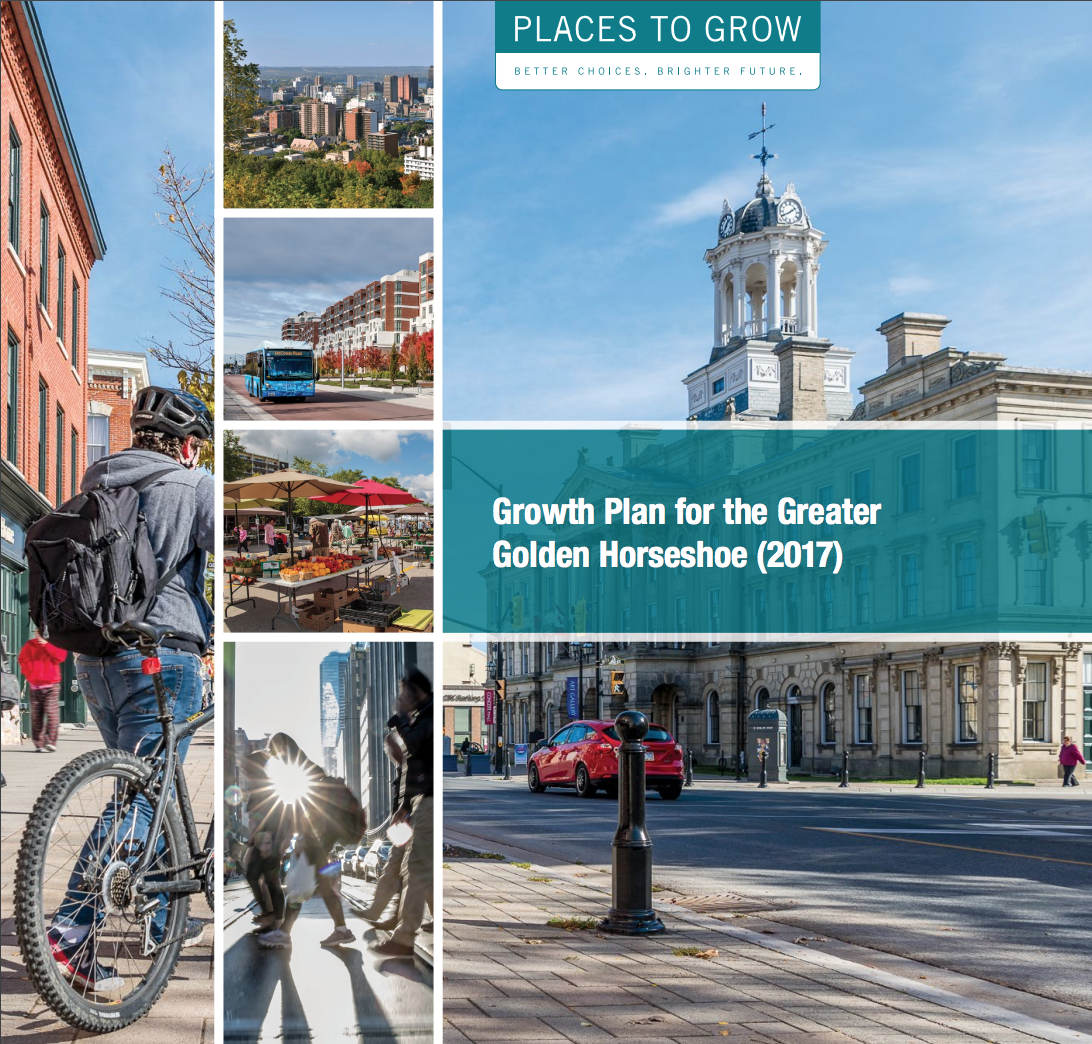
Metrolinx, Government of Ontario Ministry of Municipal Affairs and Housing, First Nations and Métis communities, private and non-profit sectors across all industries.
This policy guides how development should occur and does not have direct costs beyond staff time for policy creation and evaluation.
Ontario’s Growth Plan for the Greater Golden Horseshoe and Greenbelt Plan
Planning for growth to protect the environment and improve quality of life
“A unique land use planning framework that supports the achievement of complete communities, a thriving economy, a clean and healthy environment and social equity” (Government of Ontario, 2017, p.3).
“Making better use of [the] existing infrastructure and public service facilities and less on continuously expanding the urban area” (Government of Ontario, 2017, p. 12).
Requiring planning decisions to meet a set of minimum standards
The Greater Golden Horseshoe (GGH) is one of the fastest growing regions in North America. It houses some of the most important habitats, productive farmlands and freshwater sources in Canada. Facing competing interests in land use, the region required policy intervention.
The GGH Growth Plan and the Greenbelt Plan were developed in 2005. Goals are to:
- Protect sensitive areas from urban/suburban development.
- Control the costs of infrastructure and maintenance associated with urban sprawl.
- Foster complete communities and economic vitality in Ontario communities.
“Complete communities” encompasses development that is compact, supports transit, contains services that address local community needs in convenient locations, and as a result protects the environment by reducing greenhouse gas emissions.
Ontario’s Greenbelt is an area of permanently preserved land dedicated to agriculture, ecological preservation, and freshwater production. It identifies where future growth can be accommodated and where ecological functions need to be preserved for current and future generations.
The Growth Plan sets up a framework for development and environmental protection for 110 municipalities in the Greater Horseshoe Area. This identifies places where growth can be accommodated and more density is particularly appropriate; and recognizes transit as a priority for investment in these urban growth areas. Both policies were preceded by a Provincial Policy Statement calling for a GGH planning framework and the Places to Grow initiative.
The Growth Plan and Greenbelt Plan address urban growth challenges such as increased traffic congestion, poor air quality, ecological disturbance, impeding freshwater production; social isolation, and automobile dependent development. The plans aim to reverse these trends by supporting density and more effective transit and active transportation networks.
Important to the justification of these efforts is cost effectiveness. According to the province, “over 30% of infrastructure capital costs and 15% of operating costs could be saved by moving from lower density development to a more compact built form” (Government of Ontario, 2017, p. 30).
What makes these policies effective? We can identify at least three things: 1) ensuring accountability, 2) integrating plans with other policies and 3) creating strong indicators for evaluation. Both plans are mandatory. Both represent minimum standards, and decision-makers are encouraged to go beyond these minimum standards. The province aligned the Growth Plan with the 2012 Municipal Infrastructure Strategy, ensuring that policies are consistent with each other and thus maintain clear accountability.
The plans identify that their combined vision cannot be achieved without collaboration amongst all sectors: government, private, non-profit,residents and nations, including the unique role of First Nations in the development of the GGH region.
Ontario residents can stay up to date on the impacts of the Greenbelt, which fosters transparency, trust, and interest and engagement in the issue. Fourteen indicators track progress on the plans. Each indicator can be clearly communicated to experts and non-experts alike, and are based on credible and easily accessible data.
Incremental progress towards walkable communities
The region has begun to see a shift to more dense development, a greater variety of housing options, more mixed use development, and greater integration of transit and land use planning. One important outcome related to active transportation includes more residential units with amenities within walking distance. More progress is expected on a longer time frame. Regulations were strengthened in 2017 aimed at improved outcomes of these policies. Unfortunately, 2019 saw a proposal for more relaxed regulation.
We love how you’re working to balance competing land interests, while creating value for all stakeholders involved. Nice work Ontario!

